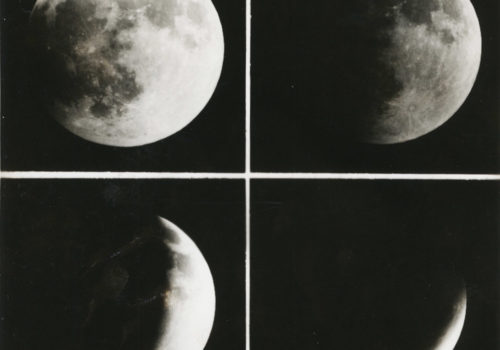On July 20th, 1969, astronauts Neil Armstrong, pilot of the lunar module “Eagle”, and Edwin E. (Buzz) Aldrin Jr., landed on the lunar surface, in a zone called Sea of Tranquility. When Aldrin joined Armstrong on the ground, he was in awe :
Buzz Aldrin : Beautiful. Beautiful.
Neil Armstrong : Isn’t that something? Magnificent sight down here. (Pause)
Buzz Aldrin : Magnificent desolation. (Long silence)
In only seven years, NASA scientists, technicians and astronauts fulfilled President John F. Kennedy’s 1962 promise to send a man to the moon before the end of the decade.
The technological and human challenges undertaken by the space adventure stimulated innovation in a number of scientific and industrial fields, including photography.
In 1962, astronaut Wally Shirra took his Hasselblad 500c camera and 80mm Zeiss lens on board the Mercury-Atlas 8 mission and brought back the first recognizable images of Earth. The same camera, equipped with a modified back to contain 100 frames, was borrowed by Gordon Cooper on Mercury-Atlas 9.
Following this, Hasselblad, who provided NASA with cameras, and Kodak, who made the negative film stock and paper for prints, mobilized their teams and research departments to improve the astronauts’ equipment. The astronauts themselves were trained to photograph in extreme light conditions in order to master frame, aperture settings, and color filters used in topographical photography.
The Mercury, Gemini and Apollo missions impacted the design and functions of cameras, lenses and various materials (film and paper), leading to important commercial breakthroughs for the companies involved. The astronauts’ “souvenir” photographs, disseminated by NASA and published in color in newspapers and magazines worldwide, forever changed the public perception of the solar system and our planet.
These vintage color prints, photographs of extraordinary travels, historical documents, exceptional objects, which have withstood the test of time and exposure to light, refer to man’s ultimate dream, the millenial quest : taming the sky. Beyond the anecdotic or the nostalgic, certain images have become iconic, timeless : Ed White, connected to his spaceship by an umbilical cord; Earth, a blue gem, receding from Apollo 8’s porthole; Aldrin’s boot print on the lunar surface…
These photographs speak to every generation. In the end, what do we seek among the stars? Our origins? Proof that we are not alone? Is there an other world?
The moon is perhaps a mirror. In seeking to attain it, humanity understood at least one thing : That Earth is the most precious of spaceships.
EXHIBITION
Magnificent Desolation
Until February 28th, 2015
Galerie Catherine et André Hug
40, rue de Seine / 2, rue de l’Échaudé
75006 Paris
France
Horaires : du mardi au samedi : 11h00 – 13h00 et 14h30 – 19h00
http://www.galeriehug.com
















